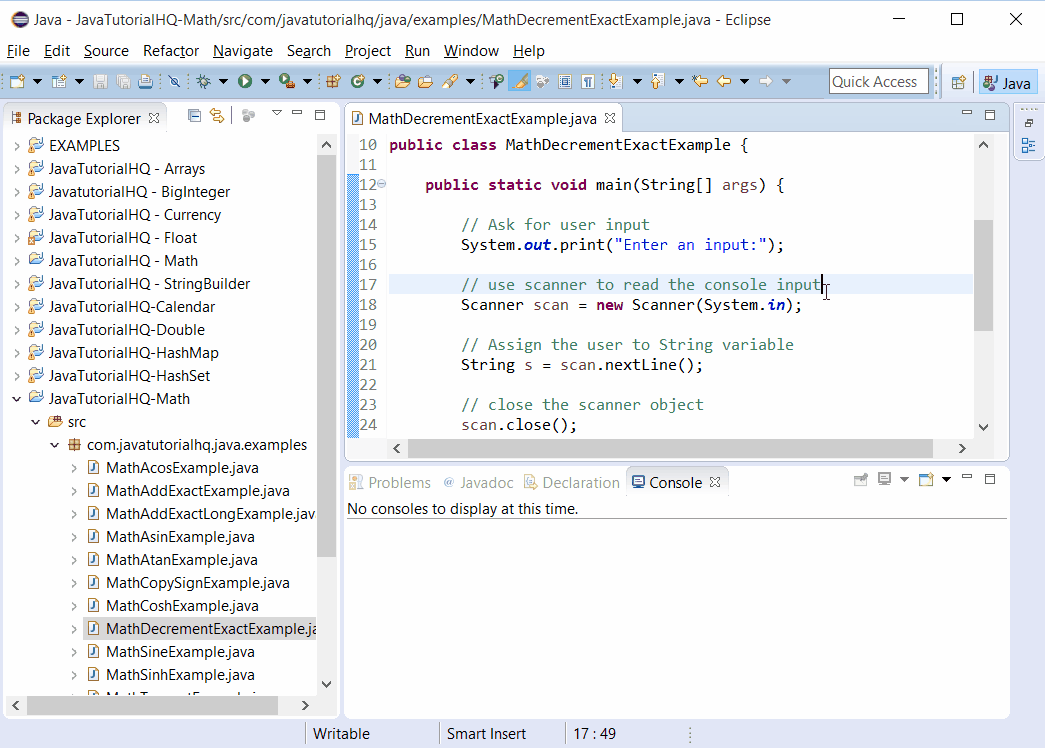

It is used to find the largest integer value that is less than or equal to the algebraic quotient. It is used to find the largest integer value which is less than or equal to the argument and is equal to the mathematical integer of a double value. It returns the floating-point value adjacent to d in the direction of negative infinity. It returns the floating-point value adjacent to d in the direction of positive infinity. It is used to return the floating-point number adjacent to the first argument in the direction of the second argument. It is used to find the Absolute value of first argument along with sign specified in second argument. It is used to find the smallest integer value that is greater than or equal to the argument or mathematical integer.

It is used to find the sign of a given value. It returns the value of first argument raised to the power to second argument.

It is used to return the cube root of a number. It is used to return the square root of a number. It is used to round of the decimal numbers to the nearest value. It is used to return the Smallest of two values. It will return the Absolute value of the given value. The various java math methods are as follows: Basic Math methods Method

The class contains various methods for performing basic numeric operations such as the logarithm, cube root, and trigonometric functions etc. return the hyperbolic tangent value of a return the hyperbolic cosine value of a ("Tangent value of a is: " +Math.atan(a)) return the trigonometric arc tangent value of a ("Cosine value of a is: " +Math.acos(a)) return the trigonometric arc cosine value of a return the trigonometric arc sine of a ("Tangent value of a is: " +Math.tan(a)) return the trigonometric tangent value of a return the trigonometric cosine value of a The portion of a program within which you can reference a variable is the variable's _.ĭ) scope d) scope A method variable _ a class variable with the same name.ĭ) destroys b) overrides You can declare variables with the same name multiple times _.ī) You never can declare multiple variables with the same name.ĭ) within a statement a) within a method A constructor _ parameters.ĭ) cannot receive a) can receive If you create a class that contains one method, and instantiate two objects, you usually store _ for use with the objects.Ī) data only (the methods are not stored)ĭ) two different methods containing two different this references a) data only (the methods are not stored) Java classes are stored in a folder or _.ĭ) packet b) package Nonambiguous, overloaded methods must have the same _.ĭ) name d) name Which of the following expressions correctly returns an integer that represents the month of a LocalDate object named hireDate?ĭ) all of the above b) hireDate.getMonthValue() Methods that you reference with individual objects are _.ĭ) public c) nonstatic Variables that are shared by every instantiation of a class are _.("Sine value of a is: " +Math.sin(a))


 0 kommentar(er)
0 kommentar(er)
